If you’re looking to add privacy to your landscape design, you should consider planting arborvitae. If you pick the right arborvitae for the job, they’re low maintenance and require no pruning.
We’ve found ten of the best arborvitae landscaping ideas to use in your yard.
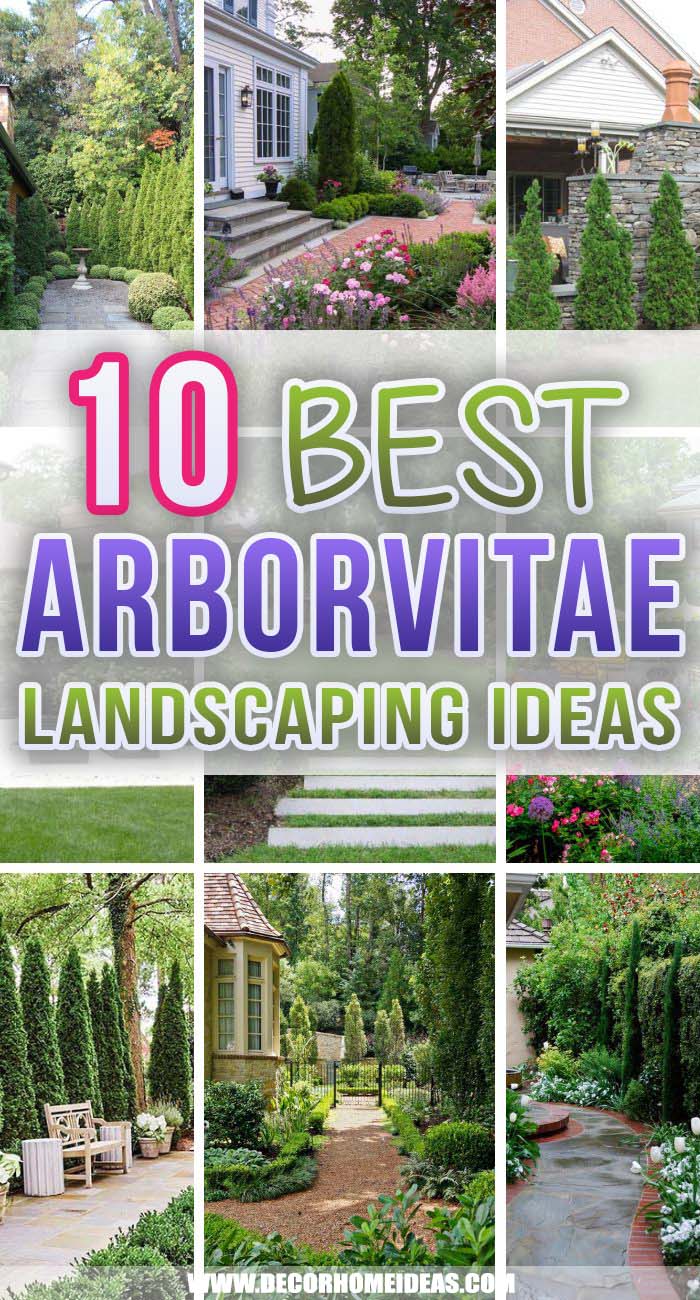
When deciding on which type of arborvitae you choose, keep in mind that some have a smell that isn’t always pleasant.
You may not want these right next to your house. Also, keep in mind that some species of arborvitae are appealing to deer while others are not. If you live in a zone where deer are common, you may want to avoid certain species.
Types of Arborvitae
Dwarf
Many of these are globe-shaped evergreens. Their compact size makes them ideal as low hedges or as green foliage in a garden bed.
- Anna’s Magic Ball grows 1.5 to 2 feet tall. Its foliage is a golden yellow color.
- Tater Tot. It remains in globe form with little priming. It stays green all year. At maturity, it will stand no more than two feet tall and less than 3 feet wide.
- Danica Arborvitae – Thuja occidentalis ’Danica’
- The Danica only reaches 2 feet high when fully mature. It thrives in containers. Its foliage is emerald green.
- Whipcord Arborvitae. The foliage of the whipcord arborvitae droops. Its foliage is made of long, narrow leaves whose color varies from emerald green to yellow-green.
- While it can grow up to four feet high, it’s often used as ground cover.
Emerald Green Arborvitae. Emerald Green lives up to its name. A rich color in a cylindrical shape. With heights reaching 15 feet, it’s more of a medium height tree than a true dwarf. It’s great for small properties, but it isn’t deer resistant.
Giant
These types of evergreens can grow to incredible heights. They’re definitely trees you want in your landscape and not foundational plants.
- North Pole Arborvitae. This is a hedge plant with a narrow shape. Their tight columnar growth makes these ideal privacy plants for narrow sites.
- Eastern Arborvitae. Thuja occidentalis is also known as the Northern White Cedar, although it isn’t related to the cedar genus. At maturity, it will reach up to 40 feet tall and 20 feet wide. Its foliage maintains a dark green color.
- American Pillar. It’s very similar to the Emerald Green arborvitae. Its foliage is a similar deep green, but it’s more tapered at the top. It grows faster and can reach a height of 30 feet.
Green Giant. If left unchecked, the thuja green giant arborvitae will grow 30 to 60 feet tall and 12 feet wide.
The Green Giant arborvitae is great for natural borders. It’s fast growing and spreads quickly. It’s also resistant to deer. This makes it popular as a screening tree. Just be sure you give it enough room to spread out and keep them away from power lines.
Let’s take a look at how arborvitae are used in residential lots. You’ll be inspired to come up with your own arborvitae landscaping ideas.
1. Arborvitae Creates a Corridor
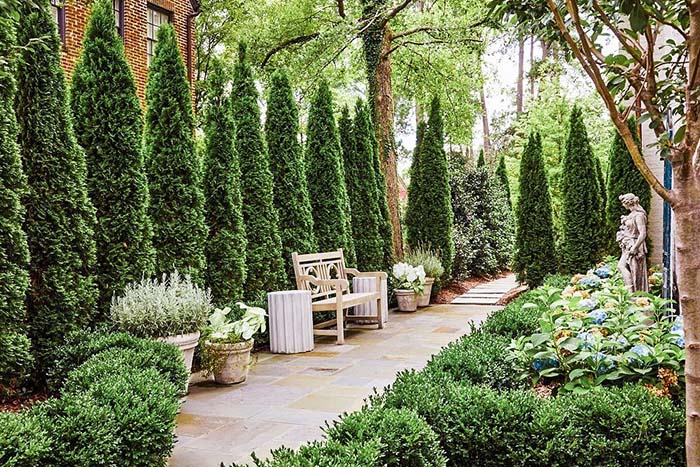
A tall arborvitae plant may look slight when first planted. Give them three to five years and they create a beautiful corridor for a path.
via Falkner Gardens
2. Emerald Green Arborvitae Privacy Screen
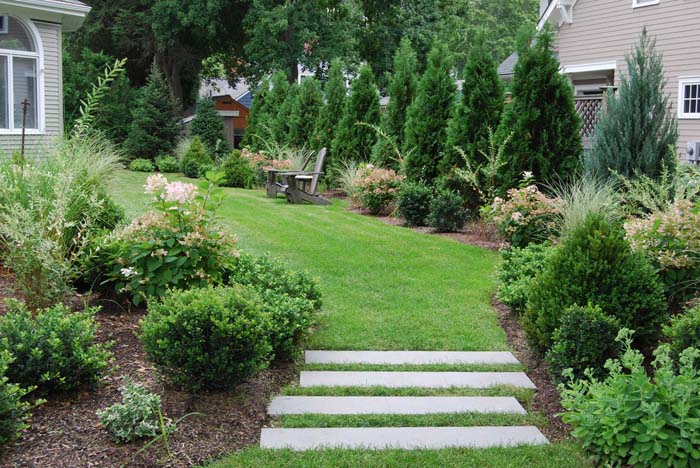
Emerald green arborvitae are hearty and will thrive in all but the wettest soils.
This makes them a solid choice to use in your landscaping where it will be difficult to retain moisture at the top of a hill.
via Carey Ezell
3. Arborvitae Planted on a Foundation Corner
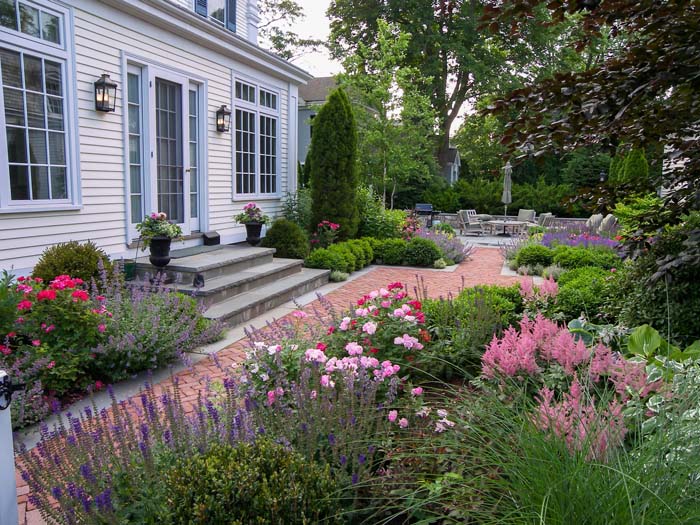
Emerald green arborvitae work well as a screen. You may run into problems if you try to plant them on the corner of your house. Their height can interfere with gutters as they mature.
via A Blade of Grass
4. Build a Living Wall
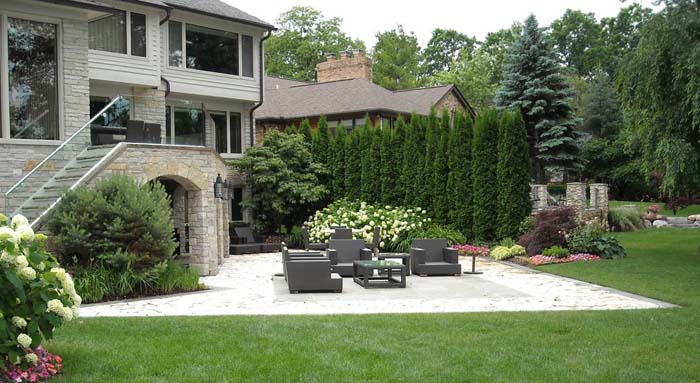
American Pillar arborvitae will tower up to thirty feet high. They make a spectacular landscaping idea when you’re looking for privacy from the neighborhood.
If you need a taller arborvitae, consider Green Giant arborvitae. It can reach heights up to 60 feet.
via Great Oaks Landscape
5. Arborvitae Blend With Boxwoods
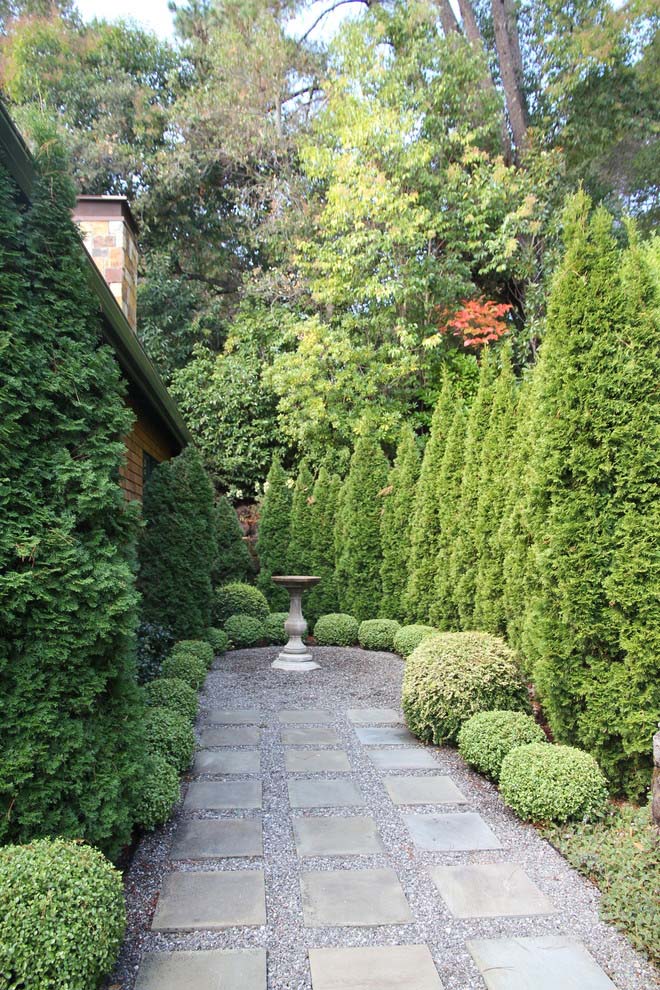
The broadleaf foliage of boxwoods resembles a bench in a classical courtyard. Boxwoods work because they will thrive in different types of light. The shade of the towering arborvitae will not bother the boxwoods.
A dwarf arborvitae such as Anna’s Magic Ball will also work here.
via Katharine Webster
6. Hide Landscaping Structures With Arborvitae
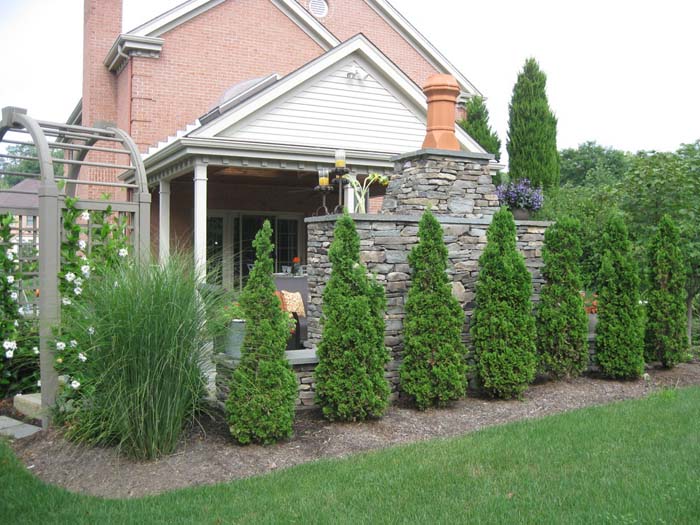
The patio and its large fireplace are stars of this landscape. The owners added American arborvitae and ornamental grasses on the backside of the fireplace.
Their foliage is the perfect cover for a wall of unattractive rocks.
via Pennsylvania Landscape & Nursery
7. Add Layers of Texture With Hedges and Arborvitae
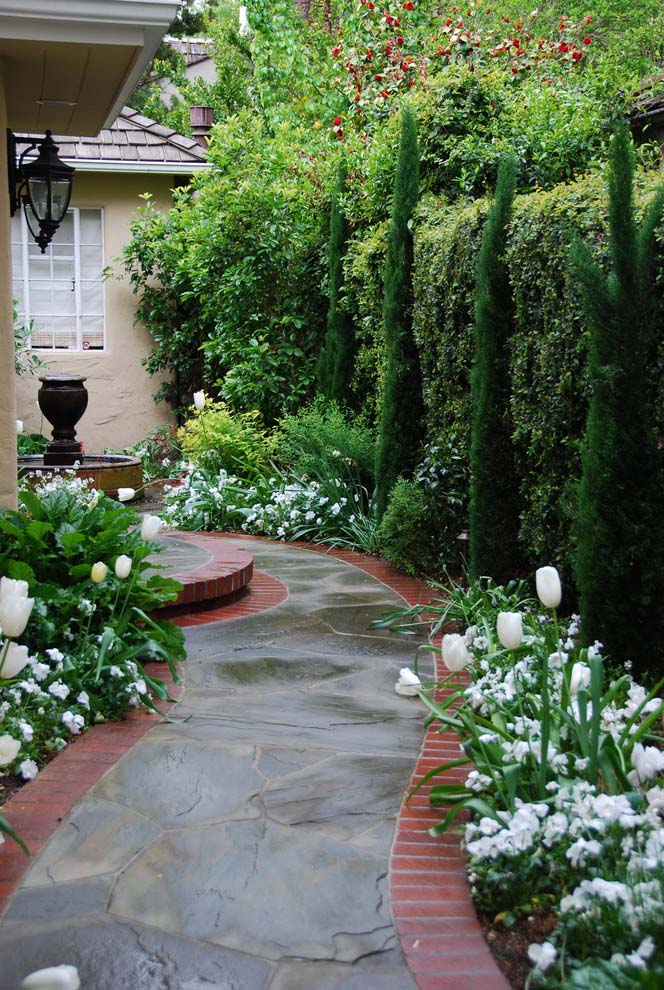
Cupressus ‘Tiny Tower’ is a thin, tall evergreen tree that adds texture in a formal garden.
It’s compact enough to thrive in a garden with annuals.
via Verdance Landscape Architecture
8. Italian Garden With Mixed Arborvitae
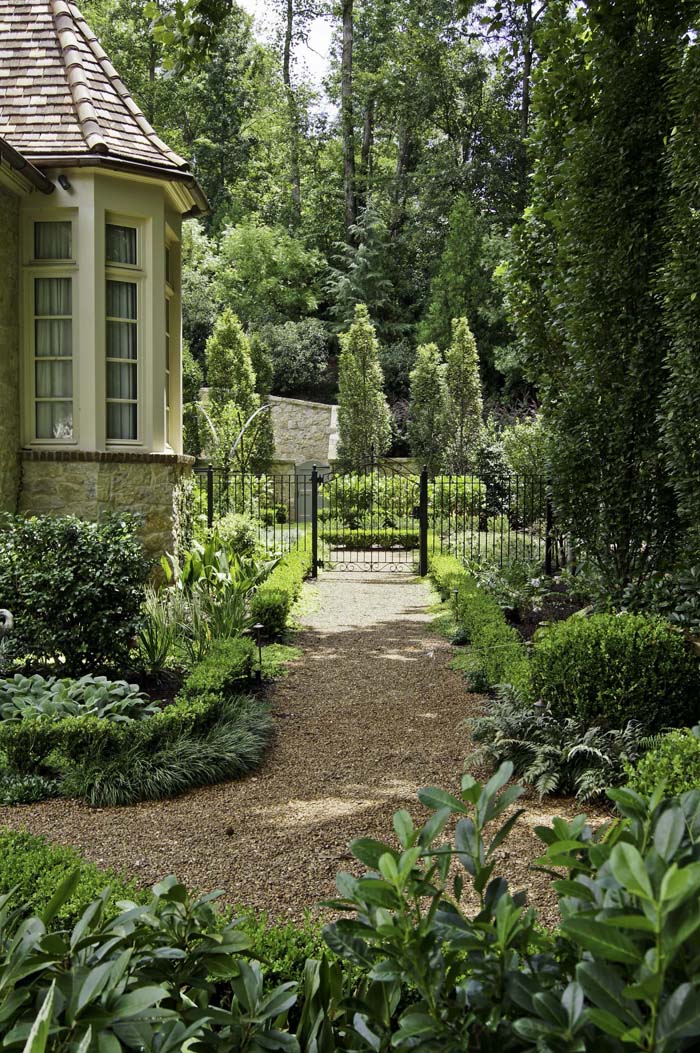
Landscaping with evergreens works on many levels in a formal Italian setting. The garden is surprisingly easy to maintain.
Mix them with boxwoods in your landscape to create areas of varying heights.
via Joe A Gayle
9. Grow Emerald Green Arborvitae in Containers
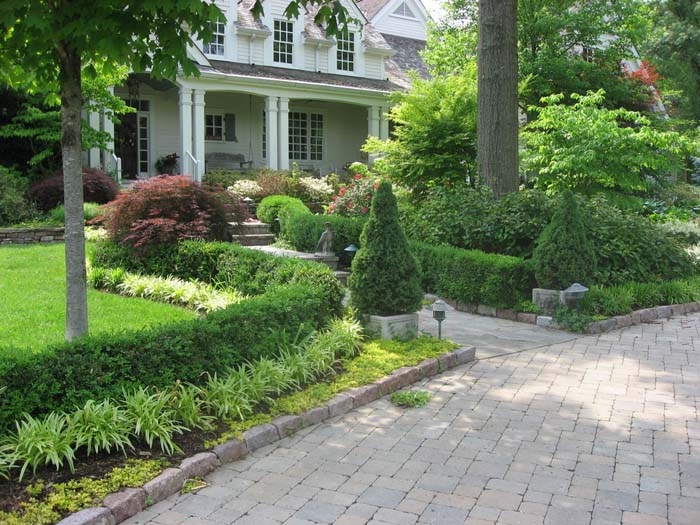
Emerald green arborvitae generally grows 12 to 15 feet high. They can be grown in containers to limit their growth.
In these instances, the large evergreen becomes more of a bonsai than a traditional tree.
via Midwest Block and Brick
10. Use Arborvitae as a Wind Barrier
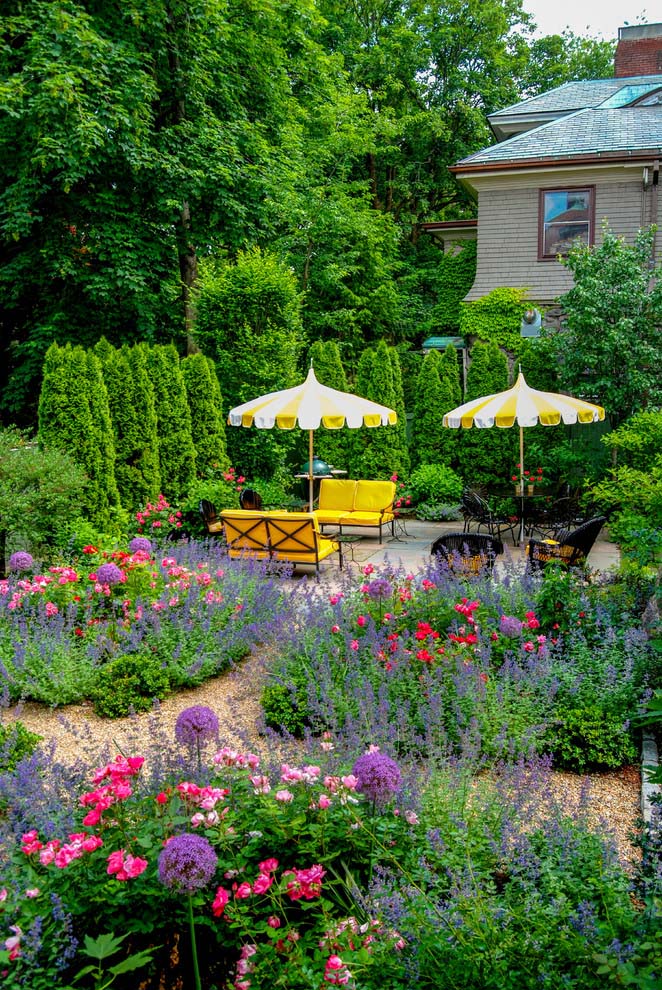
A patio with two patio umbrella tables has a magical look hidden among garden beds filled with wildflowers.
A line of arborvitae acts like patio fencing, protecting food from flying away in a strong breeze. The green towers add privacy. The patio suddenly becomes an exclusive club.
via A Blade of Grass
11. Bonus: Disguise a Pool With Arborvitae

Given the cost of building materials, adding a screen made of five Emerald Green arborvitae is a budget-friendly privacy solution.
They bring a woodsy feel to this yard while covering the siding of the above-ground pool. Arborvitae is a good choice for keeping leaves out of a pool.
